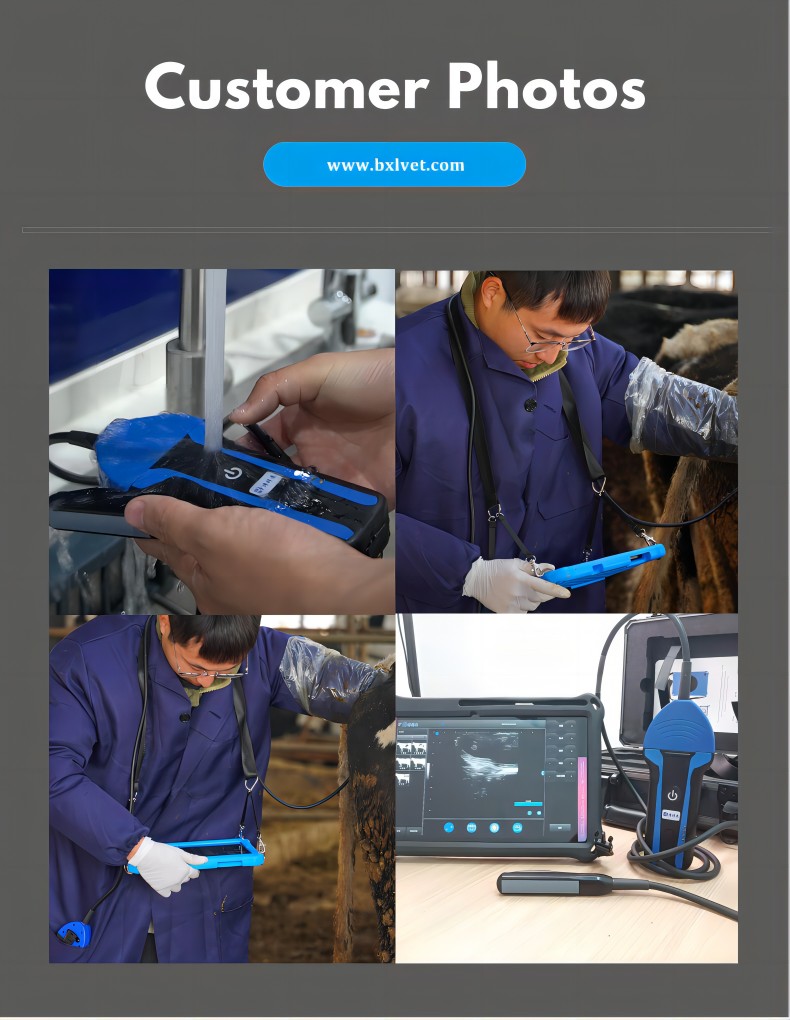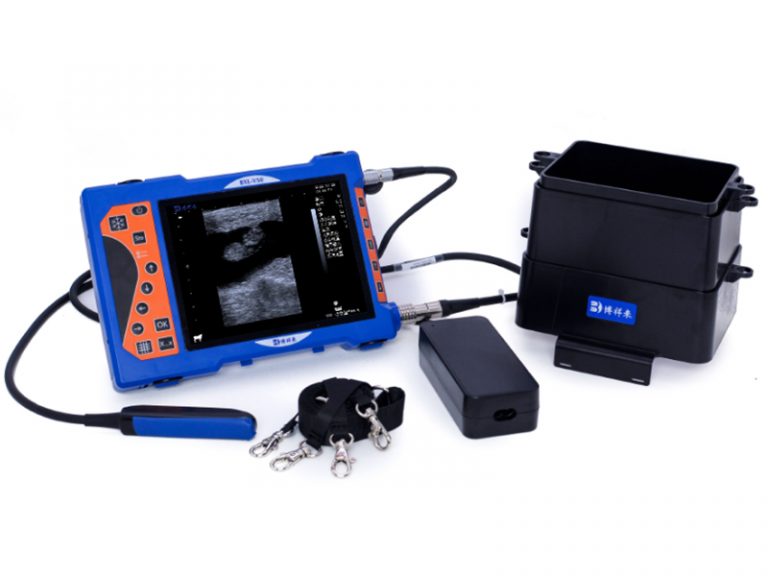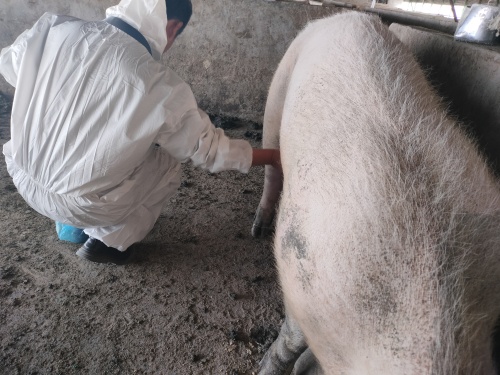BXL Veterinary Ultrasound Training: Mastering Advanced Animal Diagnostics
In the rapidly evolving world of veterinary medicine, ultrasound technology has become an indispensable tool for diagnosing and managing the health of animals. The BXL veterinary ultrasound system, known for its high-resolution imaging, portability, and user-friendly interface, is helping veterinarians and animal care professionals achieve better diagnostic outcomes. However, to fully leverage the capabilities of the BXL veterinary ultrasound, proper training is essential.

In this article, we will explore the importance of BXL veterinary ultrasound training, the benefits of mastering this technology, and how veterinarians and veterinary technicians can enhance their skills to provide the best care for animals.
Why BXL Veterinary Ultrasound Training is Essential
1. Accurate Diagnosis Requires Expertise
While the BXL veterinary ultrasound system is known for its advanced features and ease of use, mastering its functionalities is key to making accurate diagnoses. Ultrasound imaging is a specialized skill that requires knowledge of both the technology and the biological structures of animals. From pregnancy monitoring in cattle to musculoskeletal injury diagnosis in horses, each use case requires precision and expertise.
Proper training ensures that veterinary professionals can interpret ultrasound images correctly, improving the quality of diagnostics and reducing the chances of misdiagnosis. Whether you’re a veterinarian looking to expand your skillset or a veterinary technician aiming to assist in diagnostic procedures, investing in BXL ultrasound training is an important step to ensure both personal and professional growth.
2. Maximizing the Features of the BXL Ultrasound System
The BXL ultrasound veterinary system is equipped with various advanced features such as high-resolution imaging, real-time diagnostics, and wireless connectivity. However, these features can only be effectively used if you are well-versed in how to operate the system.
For example, understanding how to adjust imaging settings for different animal species, learning how to choose the right probe for a specific diagnostic task, and knowing how to interpret images correctly are all crucial skills for making the most out of the BXL system. Training programs help veterinary professionals learn the nuances of these features, empowering them to perform accurate and efficient examinations.
3. Enhanced Animal Welfare
Proper ultrasound training is not just about improving diagnostic accuracy—it’s also about improving animal welfare. By learning how to use ultrasound effectively, veterinarians can perform non-invasive and stress-free procedures, which are essential for maintaining the health and comfort of animals. For example, pregnancy detection in cows or musculoskeletal injury assessment in horses using ultrasound avoids the need for invasive procedures, ensuring that the animal’s well-being is prioritized during the examination.
4. Faster, More Efficient Diagnostics
Training in the use of BXL veterinary ultrasound also enables faster, more efficient diagnostics. When veterinarians and technicians are trained on how to quickly set up the system, select the correct probe, and interpret images in real-time, they can provide faster feedback to animal owners and caregivers. This speed is crucial, particularly in emergency situations or for large-scale herd management where time-sensitive decisions need to be made.
Key Areas of Focus in BXL Veterinary Ultrasound Training
1. Understanding the Basics of Ultrasound Technology
Before diving into specific applications of BXL veterinary ultrasound, it is important to have a solid foundation in the basics of ultrasound technology. This includes learning how ultrasound waves work, how images are created, and understanding the equipment and its settings. Basic training will cover:
- The science behind ultrasound technology (sound waves, reflection, and image creation).
- Types of ultrasound probes and how to select the right one for different animals.
- The components of the BXL veterinary ultrasound system (monitor, probes, controls).
- Understanding image resolution, depth, and contrast settings.
2. Hands-On Training with Real-Life Cases
One of the most valuable aspects of BXL veterinary ultrasound training is the hands-on experience it offers. Training programs provide practical opportunities to work with real-life animal cases in a supervised environment. This hands-on practice allows veterinarians to become comfortable using the ultrasound system, adjusting settings, and interpreting images in real-world scenarios.
Common hands-on exercises may include:
- Pregnancy detection in cattle, sheep, or goats.
- Fetal health monitoring for early detection of potential issues.
- Internal organ examination in dogs, cats, and livestock to identify disease or injury.
- Musculoskeletal assessments for diagnosing tendon, ligament, or bone injuries.
3. Mastering Image Interpretation
Learning to interpret ultrasound images is one of the most crucial aspects of BXL veterinary ultrasound training. Trainees will learn how to read two-dimensional images of internal organs, fetuses, and musculoskeletal structures. This requires understanding the normal anatomical features of various animals and knowing how to identify abnormalities such as:
- Cyst formation in organs like the liver or kidneys.
- Fluid accumulation in the abdominal or thoracic cavity.
- Abnormalities in the uterus or fetal distress during pregnancy.
- Soft tissue injuries, such as ligament tears or tendon damage.
4. Specialized Applications for Different Animal Species
The BXL ultrasound veterinary system is designed to work with a wide range of animal species. Ultrasound training programs will teach veterinary professionals how to customize the ultrasound system for different types of animals, such as:
- Cattle: Pregnancy detection, reproductive health, and musculoskeletal injury diagnosis.
- Horses: Assessing joint health, tendons, and ligaments for injury or strain.
- Dogs and Cats: Internal organ evaluation, including liver, kidneys, and heart assessment.
- Poultry: Assessing reproductive health and fertility.
Each animal species has unique anatomy, and understanding the appropriate protocols and techniques for each will enhance the accuracy of diagnostic results.
5. Advanced Techniques for Specialized Diagnostics
For veterinarians who are already familiar with basic ultrasound techniques, advanced training can help further specialize their skills. This may include:
- Doppler imaging for assessing blood flow and heart health.
- Musculoskeletal ultrasound for more detailed injury assessments in larger animals.
- Emergency ultrasound protocols for critical care situations.
- Advanced fetal imaging for in-depth evaluation of pregnancy, including multiple pregnancies or high-risk pregnancies in cattle.
6. Using Wireless and Mobile Features
Since the BXL veterinary ultrasound system is equipped with wireless and mobile connectivity, part of the training will focus on utilizing these features to improve workflow and diagnostic efficiency. Trainees will learn how to:
- Wirelessly transfer images to mobile devices or cloud storage for easy access and sharing with clients or specialists.
- Connect ultrasound systems to tablets or smartphones for remote consultations or second opinions.
- Store and analyze data in veterinary practice management systems.
How to Get BXL Veterinary Ultrasound Training
There are various ways to receive BXL ultrasound veterinary training, including:
1. In-Person Workshops and Seminars
Many veterinary schools, organizations, and professional bodies offer hands-on workshops and seminars focused on ultrasound technology. These programs are often taught by experienced ultrasound technicians or veterinarians with expertise in diagnostic imaging.
2. Online Courses and Webinars
For those with limited access to in-person training, online courses and webinars are an excellent alternative. These programs provide flexibility in terms of scheduling and can often be taken from the comfort of your own clinic or home. Online training typically includes video demonstrations, image interpretation exercises, and quizzes to test knowledge.
3. Manufacturer Training
The BXL veterinary ultrasound system manufacturer may offer on-site or remote training for veterinary practices that invest in their systems. Manufacturer training ensures that the system’s features are fully understood, and it offers an opportunity to ask questions directly to the experts behind the technology.
4. Veterinary Colleges and Institutions
Many veterinary colleges offer advanced courses in diagnostic imaging, which may include ultrasound training. These programs provide comprehensive education on a variety of diagnostic tools, including BXL ultrasound, and often cover both theoretical and practical aspects of veterinary ultrasound.





I found the training really insightful. The hands-on approach made complex ultrasound techniques easier to grasp. It’s great how practical examples helped connect theory to real cases. Definitely a valuable experience for anyone wanting to improve animal diagnostic skills.
Thanks for sharing. I read many of your blog posts, cool, your blog is very good